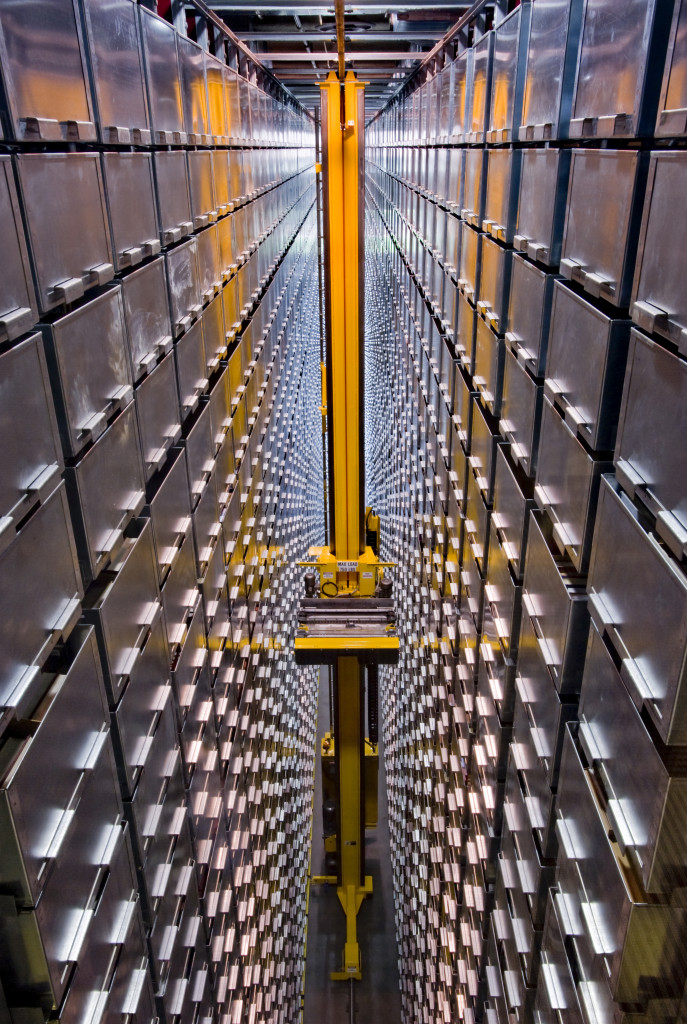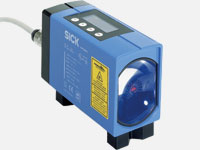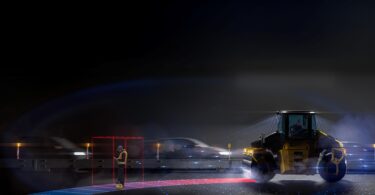 This is a guest post by PSI Technics, a provider of intelligent positioning solutions for stacker cranes, bridge cranes, transfer cars, and other automated industrial vehicles.
This is a guest post by PSI Technics, a provider of intelligent positioning solutions for stacker cranes, bridge cranes, transfer cars, and other automated industrial vehicles.
To Modernize or Not to Modernize?
 Positioning systems for cranes and industrial storage and retrieval vehicles, such as stacker cranes and bridge cranes, often play a vital role in logistics. Downtime and failures can result in significant costs, and outdated older systems may increase the risk of downtime, the costs of which can quickly amount to thousands of dollars in a matter of hours.
Positioning systems for cranes and industrial storage and retrieval vehicles, such as stacker cranes and bridge cranes, often play a vital role in logistics. Downtime and failures can result in significant costs, and outdated older systems may increase the risk of downtime, the costs of which can quickly amount to thousands of dollars in a matter of hours.
Positioning technology has come a long way over the last decade and crane modernization is no longer tantamount to replacing entire control and positioning infrastructure. The benefits of modernizing older positioning systems for cranes in facilities with ASRS applications include maximizing equipment lifespan and improving performance and throughput.
A complete replacement of the warehouse infrastructure is often the least desirable scenario due to the extremely high hardware costs and the extended installation time and production downtime such a scenario entails.
Apart from replacing the entire system infrastructure, what are some of the most feasible solutions when it comes to positioning systems for cranes modernization, and which factors may need to be taken into account prior to modernization?
Drive Integration/ Frequency Converters (Open-loop Control)
A drive-integrated modernization approach that is based on frequency converters is an option for fast and dynamic systems such as stacker cranes.
While this modernization approach is fairly inexpensive and requires virtually no new hardware other than an option board for the frequency converter, labor and downtime costs can be high and the required modernization time usually depends on the experience of the systems engineer. Drive integration draws on damping or creeping speed to ensure reliable and repeatable positioning, which affects throughput and increases mechanical stress over time.
This approach exclusively relies on the motor model and does not account for other variables that may be essential for improving positioning performance. If production requirements change, drive-integration can require extensive manual fine-tuning. A drive-integration approach does not offer error detection capabilities, and troubleshooting can result in longer outages, since there generally is no means of clearly identifying the underlying cause. Drive-based positioning also does not take into account numerous other issues that affect how a crane performs and behaves. As such, it is not a closed-loop approach to the whole machine.
PLC Modification (Open-loop Control)
Another option consists of modifying or upgrading the programmable logic controller or PLC that controls storage and retrieval tasks. This approach can be inexpensive and involves a new PLC and possibly even speed-reference hardware or frequency converters.
It is most advantageous for companies that employ engineers with PLC programming expertise and in-house maintenance staff and where higher performance and lower maintenance costs are not overriding project objectives. Initial programming, can be time-consuming and can cause downstream implications that may require troubleshooting. A PLC-based method is an open-loop approach that does not offer error detection capabilities and does not compensate for a variety of issues that can affect positioning, productivity or wear.
Microcontroller-based Systems (Closed-loop Control)
 Modernizing an existing system with a modern, microcontroller-based closed-loop positioning solution is a third option. While such solutions do incur costs for hardware and software, they generally only require an intelligent controller and a distance measuring device, for instance a sensor from the SICK long-range distance product family.
Modernizing an existing system with a modern, microcontroller-based closed-loop positioning solution is a third option. While such solutions do incur costs for hardware and software, they generally only require an intelligent controller and a distance measuring device, for instance a sensor from the SICK long-range distance product family.
These sensors, such as the SICK DME5000, are commonly used long-range sensors in connection with micro-controller based closed-loop positioning systems. The advantage of closed-loop positioning systems is that they use permanent feedback from the sensor. The type of sensor that is best suited for a particular environment (e.g.,, a mid- or long-range sensor) depends on the distances an ASRS vehicle has to travel. The positioning controller is connected to the distance sensor and relies on precise distance measurements from the sensor.
The distance measurement values basically tell the positioning controller how far the vehicle has traveled, and vehicle acceleration and deceleration also depend on these values. In short, the positioning controller uses the distance measurements to accurately position the automated vehicles in ASRS environments at the target position based on the traveling command it receives.
A major advantage of a microcontroller-based system is that the existing warehouse infrastructure, including drives, PLCs, frequency converters, signals and communication protocols can be retained. There is no need for modifications to the process control environment, so installation and commissioning times are reduced.
Microcontroller-based solutions offer greater control options for adjusting and improving crane positioning, which eliminates unnecessary damping and over- or undershooting at the target position. Performance improvements can be increased by up to 15% or more.
Microcontroller-based solutions with closed-loop control monitor the positioning process using permanent sensor feedback. In case of an error, they continue to provide reliable control and record log files with behavior-related data for subsequent error analysis. Control parameters are adjusted and optimized automatically for a variety of existing conditions to achieve a performance increase and reduce wear and mechanical stress on vehicle components. The result is a true, self-compensating positioning approach that never needs fine-tuning.
While microcontroller-based solutions do offer a variety of advantages over more traditional methods, several factors need to be considered prior to modernization:
- Costs for hardware and software
- Costs for installation and commissioning downtime
- The availability of in-house programming experts and maintenance staff
- Maintenance and troubleshooting requirements in case of errors
- Ease of use
- The system’s potential for providing a productivity increase
- The system’s potential for reducing maintenance costs.
Potential drawbacks need to be carefully weighed against the advantages of each individual approach to find the right solution that is best suited for applications in the logistics industry.
The floor is yours – if you found a modernization approach that is well-suited for your particular application or industry, we would like to hear from you.





